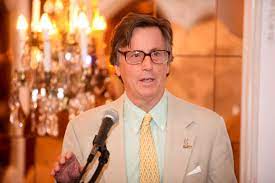
Charles A. Riley II, PhD is in his fifth year as director of the Nassau County Museum of Art, where he has curated shows ranging from The Jazz Age to True Colors, The Eighties and Energy to the current hit show, The Art of Music (featuring many of the most important instruments as well as artists in the history of the relationship between art and music).
Since taking the helm at the museum, he has turned around its finances, balancing the budget for the first time in history, built attendance, expanded the programs both in-person and online, and created a master plan for its future, including a cultural landscape plan for the nationally listed arboretum.
As important as the operational progress, he has labored to improve the institution’s reputation for transparency, social responsibility (including stewardship of the 145 acres of the nature preserve) and community service.
Keeping the grounds open throughout the pandemic, and re-opening the museum in July 2020 for the benefit of those who needed great art in their lives (many of the visitors are first responders and medical staff from local hospitals), he budgeted in order to make sure his staff remained in their jobs.
This meant calling upon more than two hundred volunteers, local residents and many retirees who are part of the museum community, to make sure every gallery was open during the full operating hours of the museum, the only museum in New York state for many months to be fully open.
To attract visitors from around the world, Riley has borrowed masterworks from many of the most important private collections in the world (including works by Degas, Renoir, Picasso, Matisse and many other masters), bringing international recognition to the museum as it rises to prominence.
Like other regional museums that have made their mark on the basis of the quality of their shows, the Nassau Museum is gaining attention from the other museums, collectors, critics and galleries that hold power in the so-called “art world” not just in New York but in Europe and Asia as well.
Many of these prominent power players are lenders of art to the shows and supporters of the museum. At the same time, as a thirty-year veteran of the classroom, he has kept the museum on track to serve thousands of Nassau schoolchildren, both in person and virtually, fulfilling its mission as a cultural hub for the region.
The director’s seminar, held after hours with refreshments, is routinely sold out, attracting artists, writers, musicians, scientists and local intellectuals every season. Prominent scholars and artists are involved in the lectures, forums, concerts and other programs that accompany each new exhibition.
Riley has commissioned masterworks of contemporary art for several of the shows, including the current “walk-in Gamelatron” that is charming visitors in the current show (it is a robotic gamelan created for the gallery) as well as an installation that re-created the aurora borealis inside the building and a spectacular cascading scroll that dramatized the emotional experience of immigration.
These commissions bring internationally famous talent to the museum in highly original, major works that are enjoyed by thousands of visitors and documented in catalogues with art historical essays and installation photographs.
Riley is internationally known as an expert on the economics of the arts, having written a book and many articles on museum administration and the “Bilbao effect,” which is the measurable stimulus that a first-class museum gives to a region as demonstrated by the Guggenheim Museum’s impact on the local economy of Bilbao, Spain.
He has been involved in the founding of two museums (in Switzerland and Taiwan) and a consultant to the city of Nanjing on the role of an art museum in the development of a “knowledge economy,” including job creation and retention as well as the positive impact of a world-class museum on local real estate values, tourism revenues (including retail, restaurant and hotels) and job training.
At work on a similar strategic plan for the Nassau County Museum of Art and its positive economic effects on Long Island, Riley believes that the best tactic in the present climate, taking into account not just the pandemic but rising inflation and uncertainties regarding government deficits, is targeted growth.
Along those lines, he has seen the revenues at the museum (which has had excellent attendance) exceed their 2019 levels and is pursuing new ways to keep that upward trend going.
Riley is the author of 39 books and hundreds of magazine articles. Before joining the museum full time, he had curated exhibitions in Taiwan, Berlin, Amsterdam and New York and covered the arts for several major international publications.
He has been a professor at both City University of New York and Clarkson University, where he taught operations management and corporate social responsibility.
A native of Manhasset, he represented Nassau County in the state tournaments as a hockey player before playing varsity at Hotchkiss and Princeton (and still plays on a men’s team).






